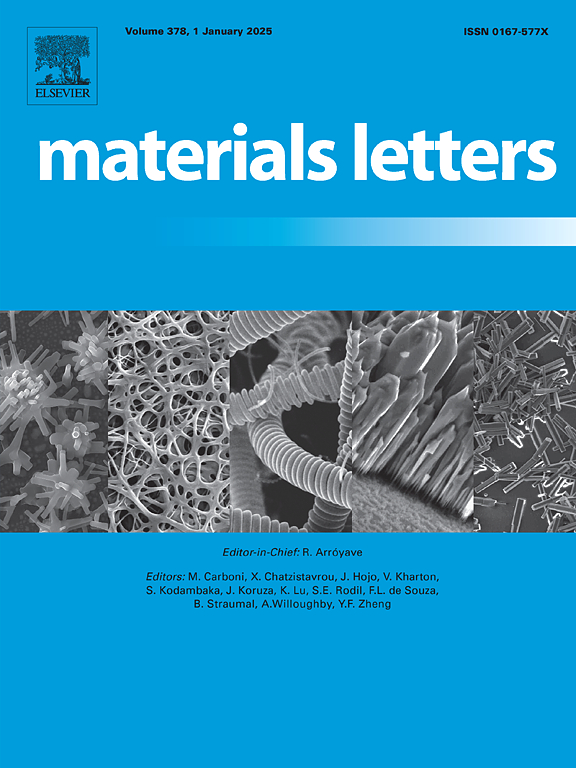Atomic-scale insight into the effect of graphene on the tribological behavior of high-entropy alloys
IF 2.7
4区 材料科学
Q3 MATERIALS SCIENCE, MULTIDISCIPLINARY
引用次数: 0
Abstract
In this study, the nano-scratching behavior of high-entropy alloys (HEA) and high-entropy alloys adsorbed with a single graphene layer (Gr/HEA) was investigated using molecular dynamics simulation. The analysis of surface morphology, tribological properties, and stress distribution reveals the significant effects of a graphene layer on the tribological behavior of high-entropy alloys during the scratching process. The results show that HEA exhibits more severe surface plastic deformation, larger transverse force (Fx), smaller normal force (Fz), and higher friction coefficient compared to Gr/HEA. In addition, the stress distribution area of HEA is significantly larger and the stress concentration is higher. The graphene layer effectively enhances the tribological properties of HEA through lubrication, stress cushioning, and load-sharing mechanisms, and this study provides a theoretical basis for the application of graphene as a surface modification layer for high-entropy alloys.
求助全文
约1分钟内获得全文
求助全文
来源期刊

Materials Letters
工程技术-材料科学:综合
CiteScore
5.60
自引率
3.30%
发文量
1948
审稿时长
50 days
期刊介绍:
Materials Letters has an open access mirror journal Materials Letters: X, sharing the same aims and scope, editorial team, submission system and rigorous peer review.
Materials Letters is dedicated to publishing novel, cutting edge reports of broad interest to the materials community. The journal provides a forum for materials scientists and engineers, physicists, and chemists to rapidly communicate on the most important topics in the field of materials.
Contributions include, but are not limited to, a variety of topics such as:
• Materials - Metals and alloys, amorphous solids, ceramics, composites, polymers, semiconductors
• Applications - Structural, opto-electronic, magnetic, medical, MEMS, sensors, smart
• Characterization - Analytical, microscopy, scanning probes, nanoscopic, optical, electrical, magnetic, acoustic, spectroscopic, diffraction
• Novel Materials - Micro and nanostructures (nanowires, nanotubes, nanoparticles), nanocomposites, thin films, superlattices, quantum dots.
• Processing - Crystal growth, thin film processing, sol-gel processing, mechanical processing, assembly, nanocrystalline processing.
• Properties - Mechanical, magnetic, optical, electrical, ferroelectric, thermal, interfacial, transport, thermodynamic
• Synthesis - Quenching, solid state, solidification, solution synthesis, vapor deposition, high pressure, explosive
 求助内容:
求助内容: 应助结果提醒方式:
应助结果提醒方式:


